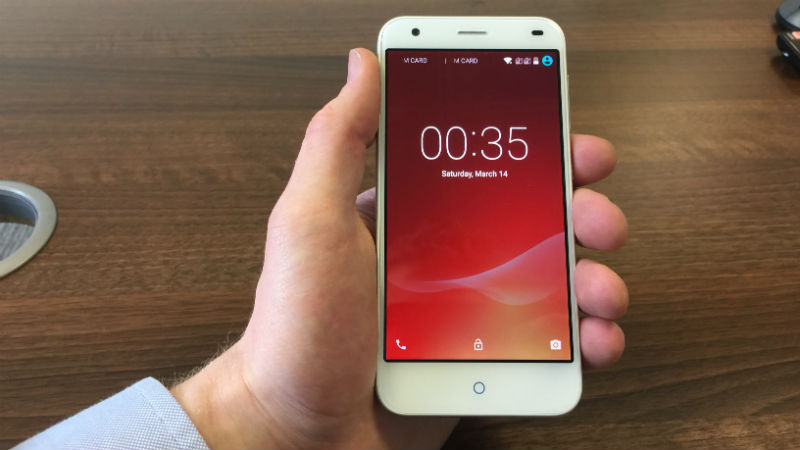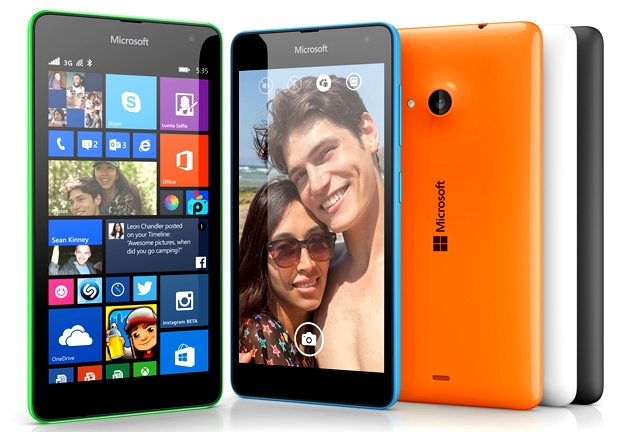
Until recently, Chinese Smartphone makers were disregarded as simple copycats. Now, alongside the revelation that Xiaomi has overtaken Samsung as China’s leading smartphone provider, Chinese firms finally seem to be realizing their potential. Good news all-round for the consumer.
Xiaomi aside, another representative of China’s emergence comes in the form of the ZTE Blade S6. The S6 is a phone that provides the perfect example as to why China’s is a blossoming but not yet fully-fledged smartphone superpower. Indeed, competitively priced, with a set of specs that defy its highly reasonable $250 price tag, the ZTE Blade S6 is well worth considering if you’re after a mid-range smartphone.
There are however, still a few small snags. The first of which is the Blade S6’s design; which appears to be somewhat of a copycat of the iPhone 6.
Whilst this is a highly unfortunate aspect of the S6, don’t judge this book by its cover.
Design
The ZTE looks incredibly similar to the iPhone 6. From the white and silver color scheme and curved edges to the circular 'Home' button, front camera placement and speaker positioning; the similarities in design are uncanny.
The one original highlight aesthetically, are the two command keys which sit either side of the 'Home' button. These appear as small blue dots when the phone is active and add a relatively trendy and futuristic look to the handset.
Aside from this though, there is little to love about a copied design that has been constructed out of flimsy plastic unlike the sleek metal frame of the phone it seeks to emulate.
Another annoyance, albeit small, is the fact that the 'Home' button does not activate the handset -- you’ll have to use the side button to do so.
Despite this, the side buttons are nicely positioned and the phone sits comfortably in the hand. It’s just a shame that the ZTE’s design is so unoriginal because aesthetics aside, this is an impressive mid-range phone.
Hardware and Software
The lackluster design is even more surprising when you juxtapose it to the ZTE Blade S6’s hardware and software. Both of which exceeded my expectations.
Apart from an average 2GB of internal RAM and 16GB storage -- which can be increased by inserting an SD Card into the phone -- the ZTE Blade S6 affords a commendable hardware and software package that rivals and exceeds most of its peers within this price range.
For a start the phone runs the impressive Android 5.0 Lollipop OS with a degree of personalization thanks to the MiFavor 3.0 Skin, which allows theme changes and a certain level of customization. In another nod toward Apple, Mifavor dispenses with Android’s app-tray.
Other than that the MiFavor 3.0 skin is rather discreet and sensibly does little to detract from the fact that the Blade S6 boasts Google’s latest and greatest Android incarnation to date.
The inclusion of the Android 5.0 Lollipop OS is further complemented by the phone’s 1.5GHz Qualcomm Snapdragon 615 64-bit processor.
A highly competent bit of hardware for the average user. I found the processor performance and speed to be quite exceptional for a mid-range phone; with no lagging and seamless transitions to be had across the board.
On top of all this, one of my favorite features of the Blade S6 is the phone’s dual-SIM compatibility, something that is all too often overlooked in more expensive phones despite the increasing demand for it.
For those with a business and personal number or frequent travelers, the dual-SIM compatibility of the Blade S6 could be a winner and it’s something worth noting if you’re currently in the market for a mid-range smartphone.
Screen
The ZTE Blade S6 just about keeps up with the competition in regard to its IPS screen.
With a 5-inch display, the phone affords a decent sized viewing platform yet on paper the phone falls behind more expensive models -- that boast 1080p resolutions -- due to its 720p LCD resolution.
But I didn’t find this a problem and the phone provided decent viewing angles and color contrast indoors. Effectively, you probably won’t notice the difference…
Battery
One bonus of having a lower screen resolution and an efficient processor is the fact that they help to mitigate any unnecessary loss of battery life.
This is useful in regard to the Blade S6 due to the phone’s underwhelming and non-removable 2,400mAh battery and the lack of a 'power-save' mode.
Put to the test, the battery did stand up and hold its own, with the reality being that the Blade S6 comfortably managed to keep up with a busy day of solid use.
That level of use often included internet, apps, camera, Bluetooth and an array of texts and calls as well as other general miscellaneous such as using the phone’s 'Smart Gestures' which ZTE notes will "consume more power".
I believe it will still need charging nightly, but all in all there is little to complain about if you are looking for a phone to complete everyday tasks and aren’t an overtly heavy user.

Camera
The ZTE showcases a commendable 13-megapixel back camera for its price range. (It also has a 5-megapixel front camera for selfie-enthusiasts too.)
The only problem I had was taking images in obscured light and the camera didn’t fare well with motion. Apart from this the camera was excellent given the price.
Utilizing the Sony IMX214 image sensor, you’ll find the Blade S6 comes with a wealth of settings and you can operate in 'simple' or 'expert' mode.
The former is your simplistic point and shoot setting that most of us will find adequate whilst the latter will allow you to modify white-balance settings, exposure and ISO.
Within the simple mode you’ll find a range of shoot settings including HDR, Panorama and Photo clear which are all useful and fun additions.
For the average user and for this price point this camera is pretty good and you’re unlikely to find much better.
Smart Gestures
Hidden away in the settings under the guise of 'Gesture and Motions' is the Blade S6’s USP -- the 'Smart Gestures'.
In locked mode: two shakes will activate the torch, flipping the phone up in a horizontal position while holding the volume key will turn on the camera, placing the phone near your ear will automatically answer an incoming call etc.
All very cool ideas in theory, but little more than gimmicks in practice, because the Smart Gestures are a bit unreliable to say the least and I found that often it was quicker to take the DIY approach.
That said, with a bit of streamlining I could see this being a hit in future ZTE generations so their addition is not without merit.
Verdict
Obviously, given the interior excellence, compromises would have to be made to keep the ZTE competitively priced. You’ll find those compromises most evident within the design, screen and battery power the phone affords.
But the phone truly excels in other areas. Especially thanks to an exceptional combination of software and hardware.
The inclusion of the Android 5.0 Lollipop OS, 1.5GHz Qualcomm Snapdragon 615 64-bit processor, Dual SIM-capability and a 13-Megapixel camera make the Blade S6 a very decent mid-range phone that is well worth considering.
Pros
- Impressive internal specs for the price point
- Dual-SIM capability
- Commendable front and back cameras
Cons
- Copycat design
- Poor battery life
- Display leaves much to be desired
Published under license from ITProPortal.com, a Net Communities Ltd Publication. All rights reserved.



